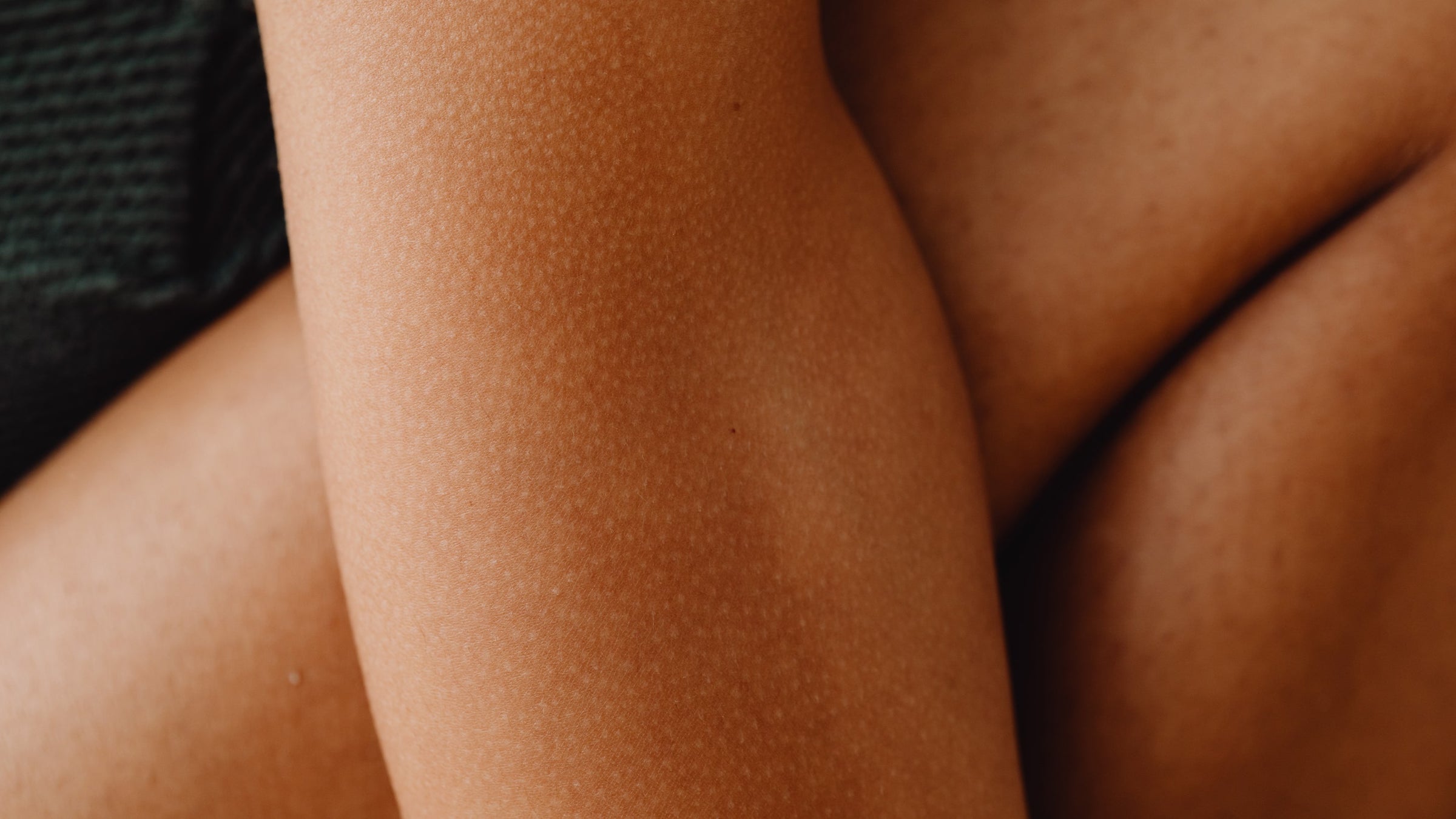
TAKE OUR QUIZ
Do you have the dry skin gene?
1 in 10 people have the dry skin gene, which can stop them from achieving healthy, balanced skin. Take our quiz and find out in less than one minute if you're likely to have the dry skin gene.
What is the dry skin gene?
Does your skin switch between feeling ‘normal’, to dry, sensitive, or a mix of all? Does your skin feel dry even after moisturising? Do you experience keratosis pilaris, dry palms or skin that cracks easily and is slow to heal? Is your skin eczema prone? Is there a history of eczema in your family? Whilst there is currently no medical test, if you answered yes to most of the questions above it's quite possible you may have the dry skin gene.
Discovered in 2006 by a team of researchers at the University of Dundee, the dry skin gene is a condition affecting up to 10% of the population and 50% of people with eczema-prone skin.
This means your skin can have reduced levels of an essential protein called filaggrin which can cause a damaged, sensitive skin barrier that is prone to dryness and cracking.
What is filaggrin and what does it do?
Filaggrin is a key bonding protein that occurs naturally in the skin and helps to keep the skin barrier sealed and protected, stopping moisture getting out and irritants getting in.
Filaggrin deficiency can result in a damaged, sensitive and ‘leaky’ skin barrier that allows higher than normal water loss (which can lead to dry, scaly skin), as well as allowing harmful substances to get through the epidermis, where they can trigger responses from itchiness to extra dry, sensitive skin and allergies.

More about filaggrin
There are two main causes of reduced filaggrin levels:
1. Genetic filaggrin deficiency – a condition affecting up to 10% of the population.
2. Skin inflammation – environmental factors such as sunburn, low humidity, skin irritants, scratches and bites, stress and age can cause a decrease in the natural production of filaggrin.
Some of the symptoms include:
- Dry, rough, bumpy skin, also known as keratosis pilaris.
- Skin that feels dry even after moisturising
- Dry spots and skin that cracks easily
- Eczema prone skin
- Dry and scaly skin across your body, often noticed on the arms and legs. These symptoms describe the condition ichthyosis vulgaris, also known as fish scale skin.
- Dry palms, also known as palmar linearity
Studies show that up to 50% of people affected by atopic dermatitis have a filaggrin deficiency. Environmental factors also play a role in the development of atopic dermatitis but having reduced levels of filaggrin increases the risk.
Dundee University. Filaggrin in atopic dermatitis; Grainne M. O'Regan, Aileen Sandilands, W. H. Irwin McLean, Alan D. Irvine
The allergy gene: how a mutation in a skin protein revealed a link between eczema and asthma; W. H. Irwin McLean
Clinical Efficacy of Oligofructans from Ophiopogon japonicus in Reducing Atopic Dermatitis Flare-ups in Caucasian Patients PubMed (nih.gov)
How do I care for my skin if I have a deficiency in filaggrin?
If your skin has low levels of filaggrin, frequent applications of traditional moisturisers may not be effective in soothing your dry skin. Your skin will require a more tailored, intensive moisturiser with clinically proven actives to boost filaggrin levels and alleviate dry, cracked skin.
Ingredients to boost filaggrin for a healthier skin barrier
Mondo Grass
Patented natural active helps to improve the skins ability to hold in hydration and stimulates filaggrin production for a healthier, balanced skin barrier.
Niacinamide
Boosts skin’s ability to maintain hydration so skin can better resist the moisture loss that leads to dry, tight, flaky skin. Niacinamide also improves skin texture.
Shea Butter
Contains natural blend of emoilents and waxes to soften and hydrate the skin. Improves the skin's natural barrier and also protects skin from damage caused by environmental triggers like pollutants.

Meet your dry skin hero
Ultra Caring Body Balm
Intensive filaggrin boosting moisturiser for dry and sensitive skin. With barrier restoring Mondo Grass, rejuvenating Niacinamide and calming Colloidal Oatmeal.
